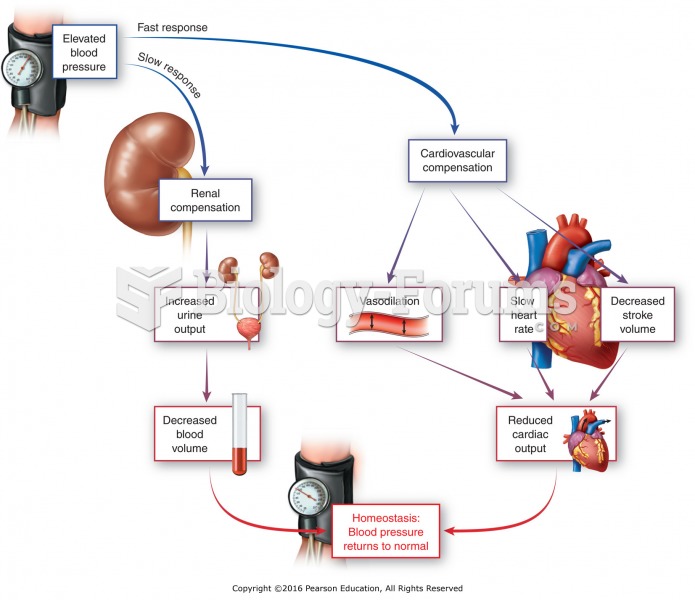|
|
|
Disorders that may affect pharmacodynamics include genetic mutations, malnutrition, thyrotoxicosis, myasthenia gravis, Parkinson's disease, and certain forms of insulin-resistant diabetes mellitus.
As many as 20% of Americans have been infected by the fungus known as Histoplasmosis. While most people are asymptomatic or only have slight symptoms, infection can progress to a rapid and potentially fatal superinfection.
Green tea is able to stop the scent of garlic or onion from causing bad breath.
Russia has the highest death rate from cardiovascular disease followed by the Ukraine, Romania, Hungary, and Poland.
Anesthesia awareness is a potentially disturbing adverse effect wherein patients who have been paralyzed with muscle relaxants may awaken. They may be aware of their surroundings but unable to communicate or move. Neurologic monitoring equipment that helps to more closely check the patient's anesthesia stages is now available to avoid the occurrence of anesthesia awareness.
 A cutaway of a typical water pump showing the long bearing assembly and the seal. The weep hole is ...
A cutaway of a typical water pump showing the long bearing assembly and the seal. The weep hole is ...
 A vane phaser is used to move the camshaft using changes of oil pressure from the oil control valve.
A vane phaser is used to move the camshaft using changes of oil pressure from the oil control valve.





